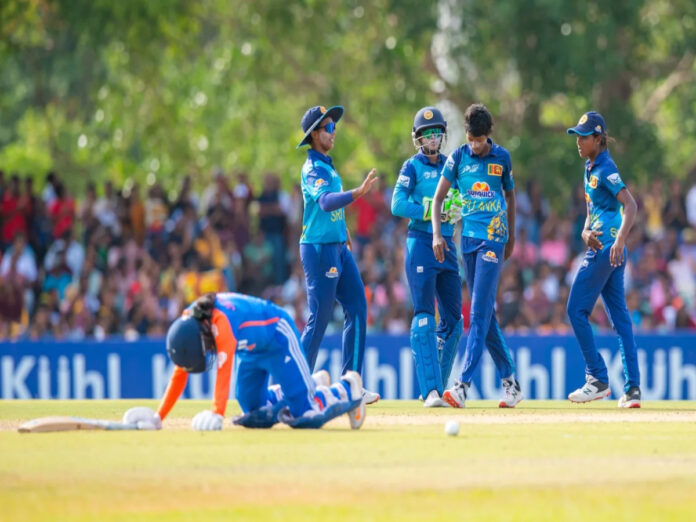India’s dream of winning their eighth Women’s Asia Cup title was shattered as they suffered a shocking eight-wicket defeat against Sri Lanka in the final of the 2024 edition.
The hosts, who were playing in their maiden Asia Cup final, outclassed the defending champions in all departments to lift the trophy for the first time in their history.
Smriti Mandhana’s brilliant half-century helped India post a competitive total of 165/6 in their allotted 20 overs.
However, the Indian bowlers failed to defend the target as Sri Lankan openers Chamari Athapaththu and Harshitha Samarawickrama stitched a match-winning partnership to guide their team home with eight balls to spare.
Here are three key reasons why India lost the final against Sri Lanka:
1. Fielding Errors and Missed Chances
India’s fielding was subpar, with two dropped catches, including one by captain Harmanpreet Kaur.
These errors proved costly, as they allowed Sri Lanka’s key players, particularly Chamari Athapaththu and Harshitha Samarawickrama, to settle into their innings without the pressure of losing wickets early.
Harmanpreet Kaur acknowledged the team’s “fumbles” and the need for improvement in their fielding, indicating that these mistakes directly impacted the outcome of the match.
2. Inconsistent Batting Performance
While India set a total of 165, the batting performance was inconsistent. Smriti Mandhana’s solid innings of 60 runs off 47 balls provided a strong foundation, but the middle order faltered.
Key players like Harmanpreet Kaur and Uma Chetry failed to convert their starts into significant scores, which hindered the team’s ability to post a more competitive total.
Although Jemimah Rodrigues and Richa Ghosh contributed with quick runs, their efforts were not enough to propel India to a higher score that could have put Sri Lanka under pressure.
The lack of big partnerships in the middle overs meant that India could not build on their initial momentum, leaving them with a total that was ultimately insufficient against a determined Sri Lankan side.
3. Sri Lanka’s Strong Batting Response
Sri Lanka’s response with the bat was both aggressive and calculated. Chamari Athapaththu and Harshitha Samarawickrama played pivotal roles in the chase, scoring 61 and 69 runs, respectively.
Their partnership of 87 runs for the second wicket stabilised the innings after an early run-out and effectively dismantled India’s bowling attack.
The Sri Lankan batters demonstrated excellent composure and skill, particularly in handling pressure situations, which contrasted sharply with India’s performance.
The ability of Sri Lanka to chase down the target with relative ease highlighted their strategic execution and the depth of their batting lineup, ultimately leading to their first Women’s Asia Cup title.


